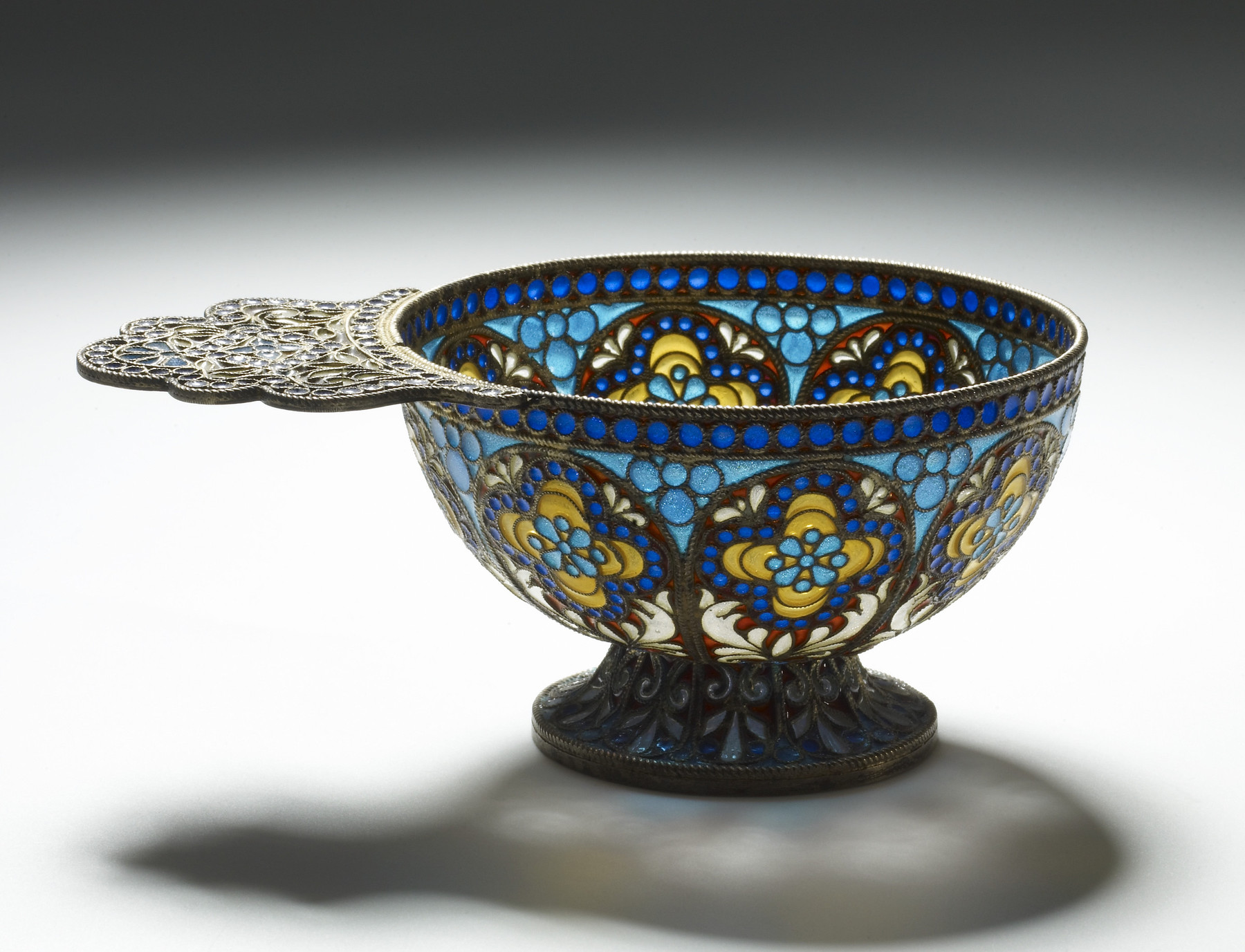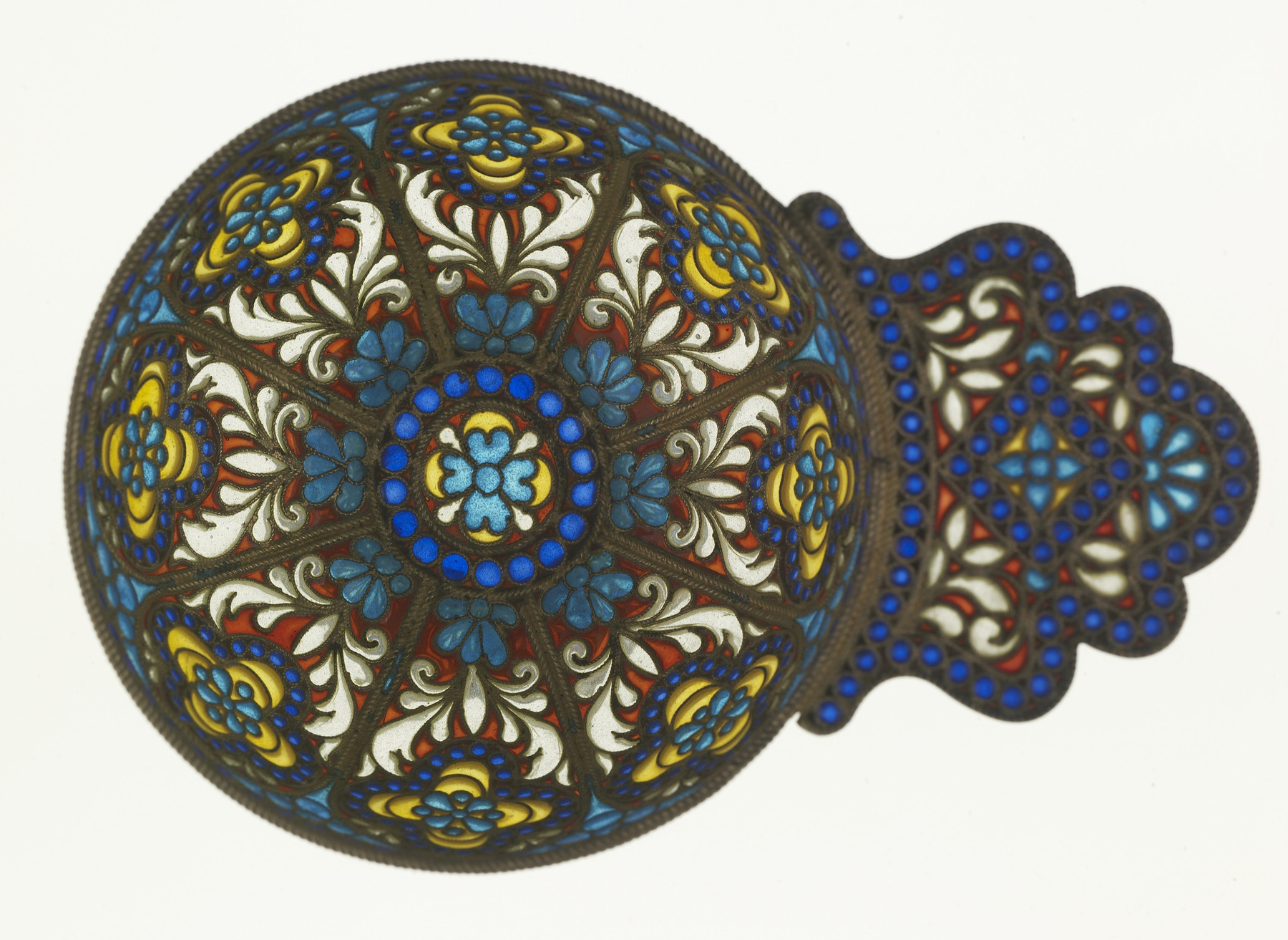Charka
(18th and 19th Centuries )
This charka is an exceptionally delicate example of plique-à-jour work in which the translucent enamel is supported by a delicate wire cage. It's bowl is divided into eight semi-oval shapes. Within each, appear identical, stylized plants with foliage in white and turquoise over red and blossoms in turquoise and yellow. The interstices are turquoise. Rows of larger blue circles are used to circumscribe the bowl's rim and to create patterns on the kokoshnik-shaped handle. The foot, also in plique-à-jour enamel, adheres to the same color scheme.
Inscription
Provenance
Provenance (from the French provenir, 'to come from/forth') is the chronology of the ownership, custody, or location of a historical object. Learn more about provenance at the Walters.
Jean M. Riddell, Washington, D.C. [date and mode of acquisition unknown]; Walters Art Museum, 2010, by bequest.
Geographies
Russia, St. Petersburg (Place of Origin)
Measurements
H: 1 3/4 x W with handle: 4 5/16 x D: 2 15/16 in. (4.5 x 11 x 7.5 cm)
Credit Line
Bequest of Mrs. Jean M. Riddell, 2010
Location in Museum
Not on view
Accession Number
In libraries, galleries, museums, and archives, an accession number is a unique identifier assigned to each object in the collection.
In libraries, galleries, museums, and archives, an accession number is a unique identifier assigned to each object in the collection.
44.982




